Ballade in C Major
Details
Description
SKU: S0.597957
Composed by Timothy Cho. 21st Century,Contemporary Classical,Post-Romantic. 19 pages. Published by Timothy Cho (S0.597957).Work #150: Ballade No. 2 in C Major, Op. 31
Date Composed: November - December 2018
Length: 301 measures, 10-15 minutes to perform
Difficulty: Advanced
This expressive ballade is roughly in sonata-allegro form, and will be analyzed as such.
Exposition (measures 1-97):
After the first 2 measures of right-hand introduction, the 1st theme appears in the left hand. In measure 19, the music modulates to the parallel minor, and the 2nd theme appears. The music modulates through E♭ Major and e♭ minor. Using a diminished seventh chord on E♭, the music leads back into a restatement of the 1st theme in measure 35.
The subject group (1st and 2nd themes) ends in measure 46, when the 1st theme is modified to go into c minor, which is followed by a transposition of the 1st (main) theme in measure 52. The music goes through A♭ Major, and then after the transition, the second subject group begins with the main theme opening in B♭ Major. This leads to some passagework in measure 77, which includes the 3rd theme in the right hand. The closing theme is in measure 93, and this is given in the left with a fanfare-like figure in the right. The exposition closes in B♭ Major with an arpeggio, instead of the usual V key (in this case that would be G Major).
Development (measures 98-210):
This is not a traditional development. After an opening motif of 4 repeated notes which is repeated throughout the D♭ Major section (m. 98-112), a lyrical section in E Major (by way of chromatic mediant modulation) begins in measure 113. One is to voice the left hand well and to let the arpeggios in the right hand “flow”. One may also choose to linger on the 4/4 bars (143 and 144).
After a long ritardando (m. 149-152), the lyrical section gives way to an atonal fanfare that references the closing theme by rhythm. This section leads into another in f minor, in which the main theme is heard again, adjusted to be in the minor key (m. 173). The 2nd theme is also heard in measure 189, but this is transposed a perfect fourth up. The development closes with the iv and V of f minor, and this leads back into the recapitulation.
Recapitulation (measures 211-294)
Again, the main theme is restated again in measure 213. The recapitulation basically follows the same pattern as the exposition, except that the second theme is excluded (thus it is shorter than the exposition). Again, the first theme is modified to go into c minor, but instead of leading into a section of A♭ Major, a quasi cadenza leads the A♭ chord back into C Major, and the second subject group begins in measure 261. This time, the closing theme is extended by 2 measures to hold the suspense, and the closing arpeggio ends at the coda.
Coda (measures 295-301)
The coda is simply a few arpeggios that end the piece: in this case, the I, IV, iv minor, I, which ends the piece with a minor plagal cadence, and a glissando all the way to the top of the keyboard.
Digital Downloads are downloadable sheet music files that can be viewed directly on your computer, tablet or mobile device. Once you download your digital sheet music, you can view and print it at home, school, or anywhere you want to make music, and you don’t have to be connected to the internet. Just purchase, download and play!
PLEASE NOTE: Your Digital Download will have a watermark at the bottom of each page that will include your name, purchase date and number of copies purchased. You are only authorized to print the number of copies that you have purchased. You may not digitally distribute or print more copies than purchased for use (i.e., you may not print or digitally distribute individual copies to friends or students).
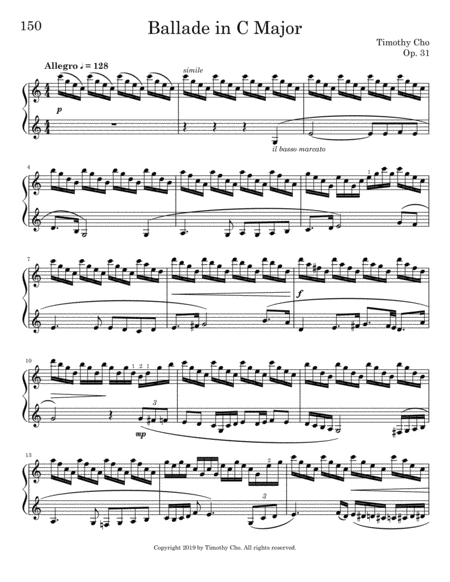
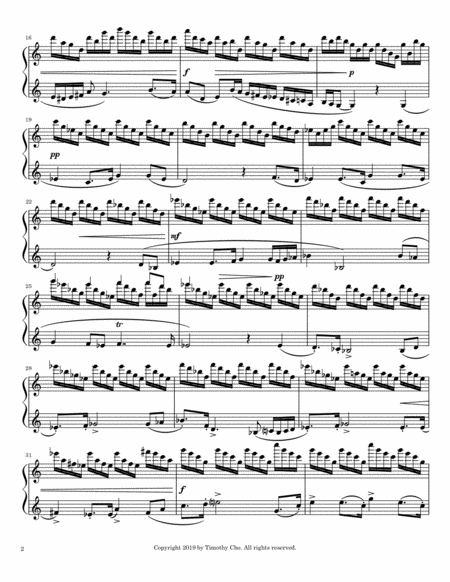
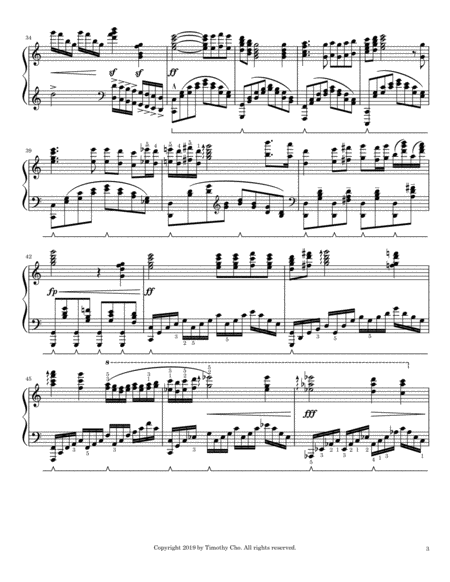
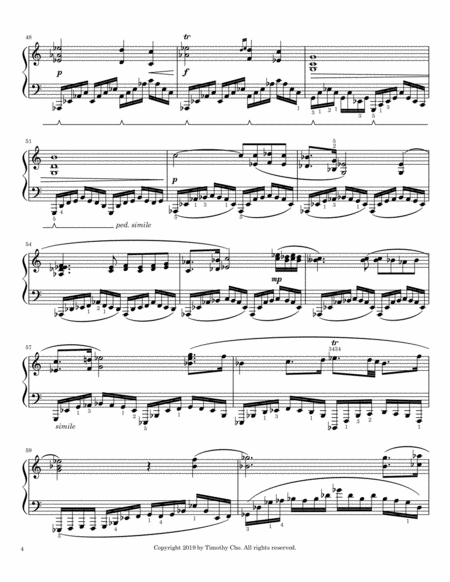
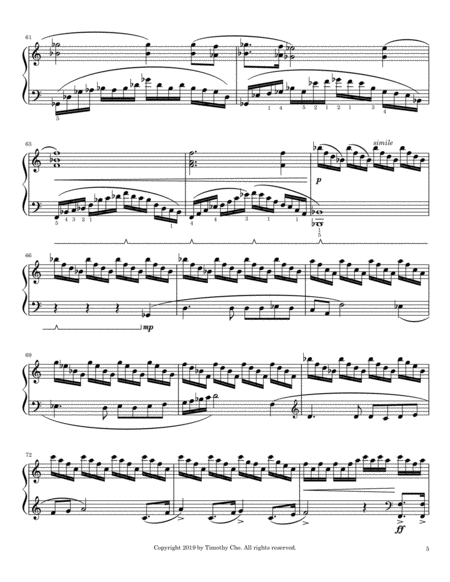
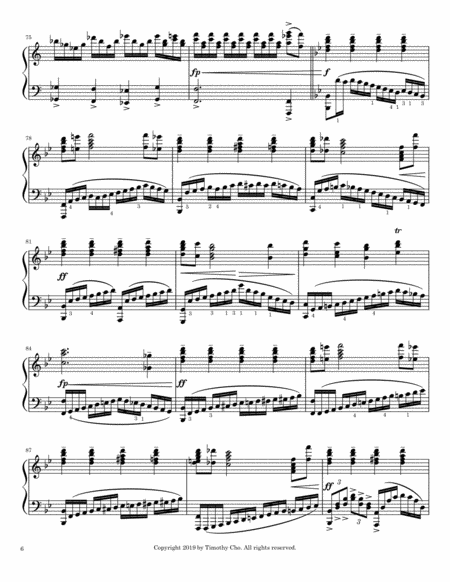
 Share
Share